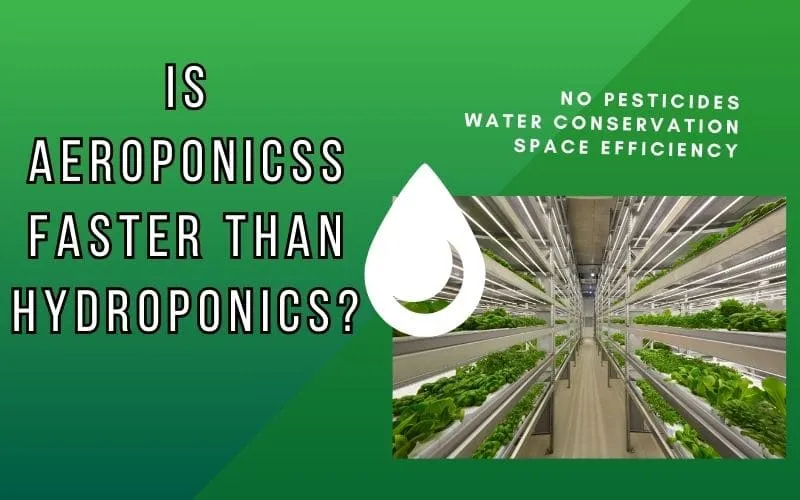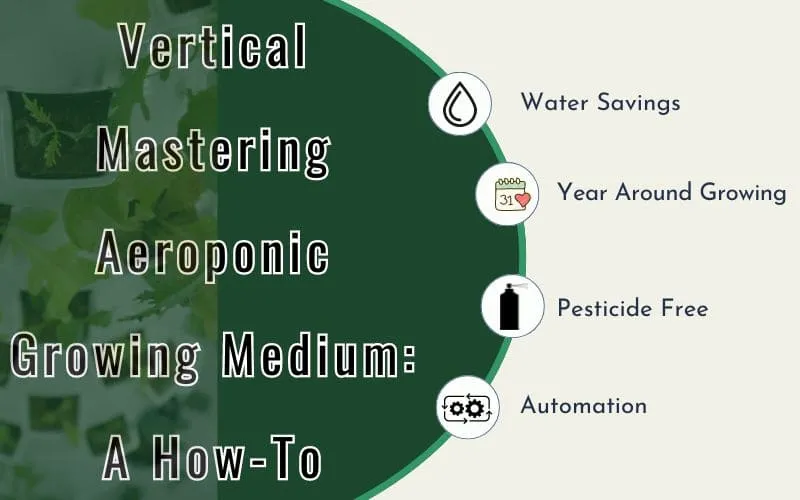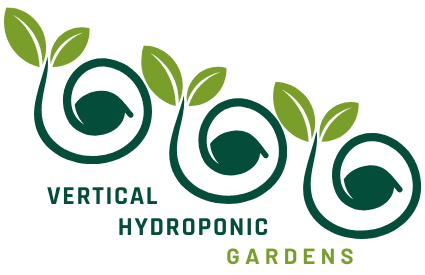What is vertical Aeroponics?

Introduction
Welcome to our comprehensive guide on vertical aeroponics! In this article, we will explore the incredible benefits of vertical aeroponics, how it works, its advantages over traditional farming, and ultimately, why it’s a game-changer for modern agriculture.
Vertical aeroponics represents a cutting-edge method of cultivating plants in a soil-less environment, making efficient use of space, water, and nutrients. Let’s dive into this innovative farming system and discover how it is revolutionizing food production.
Benefits of Vertical Aeroponics
1. Space Efficiency
Vertical aeroponics offers remarkable space efficiency, allowing for the cultivation of a large number of plants in a compact vertical setup. By utilizing vertical space, this method minimizes the overall footprint required for cultivation, making it ideal for urban environments and locations with limited space.
- Optimizing land use: Vertical aeroponics maximizes the productive use of available land by growing crops upwards, thereby reducing the physical footprint required for large-scale cultivation.
- Urban agriculture: With its space-saving design, vertical aeroponics enables urban farmers to grow fresh produce in locations with limited space, such as rooftops, balconies, and indoor settings.
- Scalability: This cultivation method is highly scalable, allowing for the efficient use of space in both small-scale and large-scale agricultural operations.
2. Water Conservation
When it comes to sustainable agriculture, water conservation is a critical aspect. Vertical aeroponics is a leading solution in this area, offering remarkable benefits for water usage efficiency. Here’s a deeper look at how vertical aeroponics contributes to water conservation:
- Optimized Water Utilization: In vertical aeroponics, water is utilized in a highly efficient manner, as it is delivered directly to the plant roots. This method ensures that water is used only where it is needed, minimizing wastage and promoting conservation.
- Reduced Evaporation Losses: The closed-loop system of vertical aeroponics minimizes evaporation losses, which is a significant factor in traditional farming systems. This feature further enhances water conservation by retaining moisture within the growing environment.
- Water Recycling: Vertical aeroponic systems are designed to recycle and reuse water, reducing the overall water demand. This sustainable approach contributes to water conservation efforts and aligns with eco-friendly farming practices.
3. Nutrient Efficiency
Vertical aeroponics maximizes nutrient efficiency by delivering a fine mist of water and nutrients directly to the plant roots. This precise nutrient delivery ensures that the plants receive the necessary elements for optimal growth, leading to higher yields and healthier crops. With lower nutrient wastage and enhanced absorption, this method sets a new standard for agricultural sustainability.
How Vertical Aeroponics Works
1. Aeroponic System Components
Aeroponic System Components
Vertical aeroponics operates by utilizing a series of essential components including specialized misting nozzles, reservoirs, nutrient solutions, and vertical growing towers. The misting nozzles deliver a nutrient-rich mist to the suspended plant roots, ensuring that they receive an optimal supply of water, nutrients, and oxygen for vigorous growth.
2. Plant Growth Process
In vertical aeroponics, the plant growth process is a fascinating journey that begins with seed germination and unfolds through various distinct stages. Let’s delve deeper into each phase:
- Seed Germination: This initial phase marks the emergence of the seedling from the seed. The root system begins to develop and prepare for nutrient absorption.
- Seedling Stage: At this stage, the young plant continues to develop both its root system and initial aboveground growth.
- Vegetative Growth: The plant experiences a period of rapid growth as it focuses on developing its foliage and branching out.
- Flowering and Fruit Development: This final stage sees the plant shifting its energy towards the production of flowers and fruits, marking the culmination of its growth process.
Throughout these stages, the roots are continuously exposed to a nutrient mist, which fosters a sustainable, balanced nutrient uptake, facilitating the growth of sturdy and healthy plants.
Strategic placement within the vertical towers optimizes space and light exposure, thus enhancing photosynthetic efficiency and overall productivity.
3. Maintenance and Management
Maintaining a vertical aeroponic system involves several critical tasks to ensure the health and productivity of the plants. Effective maintenance and management are essential components of successful vertical aeroponic cultivation. The following detailed guidelines outline the key aspects of maintenance and management:
- Nutrient Monitoring: Regular testing and monitoring of nutrient levels within the system are crucial. This involves assessing the pH balance and nutrient strength to ensure that the plants receive the necessary nutrients for healthy growth.
- Misting Optimization: Proper misting is paramount in vertical aeroponic systems. It’s important to maintain the misting frequency and duration to provide optimal moisture levels without over-saturating the roots.
- Plant Health Inspection: Regular inspection for signs of plant stress or disease is vital. This includes observing leaf color, texture, and overall growth patterns to detect any potential issues early on.
- Environmental Control: Maintaining the ideal environmental conditions is critical. This involves regulating temperature, humidity, and light exposure to create an optimal growing environment for the plants.
- Nozzle Cleaning: Periodic cleaning of nozzles is essential to ensure uninterrupted misting and prevent blockages that can hinder nutrient delivery.
- Nutrient Replenishment: Replenishing nutrients at the appropriate intervals is crucial for sustaining plant health and productivity. This involves carefully following specific nutrient dosage guidelines for different growth stages.
By diligently attending to these aspects of maintenance and management, growers can ensure that their vertical aeroponic systems operate optimally, leading to consistent and successful crop cultivation.
Vertical Aeroponics vs. Traditional Farming
1. Comparison of Resource Usage
Vertical aeroponics and traditional farming differ significantly in resource usage. While traditional farming consumes vast amounts of water and land, vertical aeroponics thrives in water and space conservation. With vertical orientation and precise nutrient delivery, the overall resource usage is minimized, making it a sustainable and efficient choice for modern agriculture.
2. Crop Yield and Growth Rate
When comparing crop yield and growth rate, vertical aeroponics showcases impressive results. The controlled environment and optimized nutrient delivery lead to accelerated growth and higher crop yields. In contrast, traditional farming faces challenges such as nutrient leaching, uneven growth, and limited space utilization, highlighting the superiority of vertical aeroponics in crop production.
3. Environmental Impact
- Reduced Environmental Impact
- Vertical aeroponics offers a significant reduction in environmental impact compared to traditional farming methods. This is primarily due to the efficient use of water, minimal land requirement, and controlled nutrient delivery.
- Water Efficiency
- Vertical aeroponics utilizes water with exceptional efficiency, employing a closed-loop system that minimizes water wastage. This ensures that the plants receive an adequate supply of water while conserving this valuable resource.
- Land Conservation
- With vertical aeroponics, the minimal land requirement is a key environmental advantage. By utilizing vertical space, this method reduces the need for extensive land areas, making it a suitable option for urban agriculture and land conservation initiatives.
- Reduced Resource Consumption
- By promoting sustainability and minimizing the agricultural footprint, vertical aeroponics emerges as an environmentally conscious farming approach. It reduces resource consumption, contributes to lower environmental impact, and aligns with sustainable farming practices.
Conclusion
In conclusion, vertical aeroponics represents a transformative approach to modern agriculture, offering unparalleled space efficiency, water conservation, and nutrient optimization. By harnessing the power of vertical cultivation, this innovative method surpasses traditional farming in resource usage, crop yields, and environmental sustainability. As we continue to advance in agricultural practices, vertical aeroponics stands as a beacon of innovation and sustainability, shaping the future of food production.



